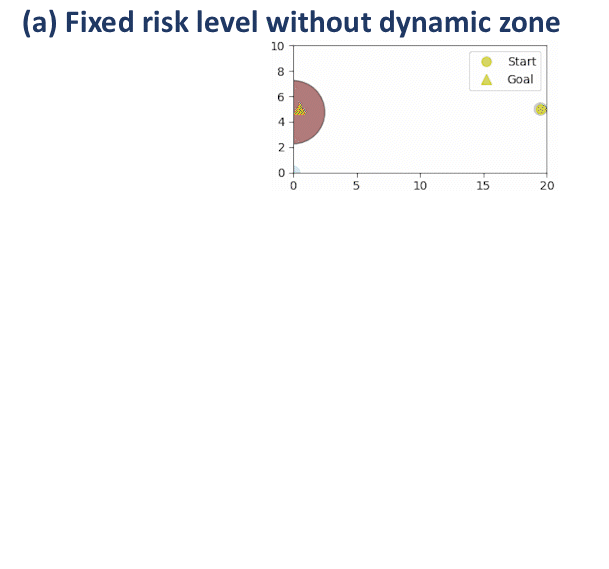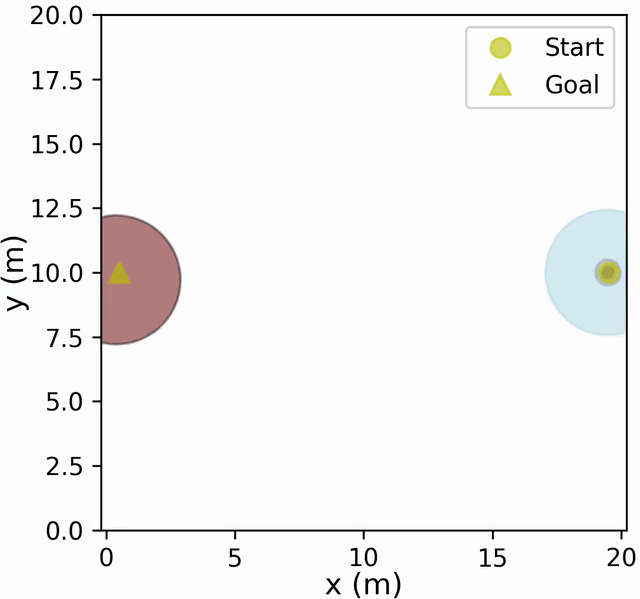Risk-Adaptive CVaR Barrier Functions for Safe Navigation
A risk-aware controller that keeps mobile robots safe in uncertain human crowds.
Overview
We design a risk-adaptive control barrier function (CBF) that lets mobile robots move through dense, uncertain human crowds while keeping collision risk below a desired threshold (Wang et al., 2025). By embedding Conditional Value at Risk (CVaR) into the barrier formulation, the controller reacts proactively to rare but dangerous crowd motions instead of relying on nominal predictions.
Key Contributions
- Introduce a CVaR-based safety certificate that bounds the probability of constraint violations under distributional uncertainty.
- Provide a closed-form update rule for the barrier parameter, enabling real-time risk adaptation on embedded platforms.
- Demonstrate superior safety and task efficiency on large-scale crowd navigation benchmarks and hardware-in-the-loop tests compared with chance-constrained and deterministic baselines.
Method at a Glance

Risk-aware CVaR barriers tighten the safe set only when the observed crowd motion suggests high tail risk, keeping the robot efficient during nominal operation and conservative in dangerous scenes.
Resources
- Video walkthrough: YouTube demo
- Project website: lawliet9666.github.io/cvarbf
- Paper (PDF): Safe Navigation in Uncertain Crowded Environments Using Risk Adaptive CVaR Barrier Functions
The toolbox and evaluation scripts used in the study are being prepared for release. Reach out if you would like early access to the experimental datasets or ROS integration notes.
